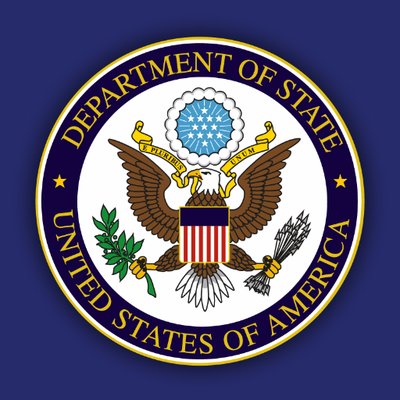The nasty surge of tensions between China and Japan over rival claims to the Senkaku/Diaoyu islands in the East China Sea has received considerable attention worldwide. But many observers were caught off guard in late September when a full-fledged naval battle (fortunately involving only water cannons) erupted near the disputed islands between Japanese patrol ships and a flotilla of dozens of fishing boats and eight coast guard vessels from Taiwan.
It should not have come as that much of a surprise, however. The Taipei government has had long-standing claims to that chain of islands—claims that existed when the Nationalist regime still controlled mainland China before the victorious Communist forces compelled its rivals to flee to Taiwan.
A similar dynamic exists with respect to the multi-sided territorial disputes in the South China Sea. Most diplomatic and media attention has focused on the competing claims of China and several members of the Association of Southeast Asian Nations (ASEAN). There were unpleasant incidents earlier this year between China and two ASEAN countries, the Philippines and Vietnam.
It’s sometimes forgotten, though, that Taiwan also asserts broad territorial claims in that body of water. Indeed, Taipei has managed to establish an impressive presence in some portions of the South China Sea. It controls the Pratas—the largest island group, known locally as the Donghsa Islands—and Taiping, the largest of the hotly contested Spratly Islands
Patrick M. Cronin, senior director of the Asia-Pacific Security Program at the Center of a New American Security, contends that Taiwan’s claims to the area “are as legitimate as the claims of most actors.” Indeed, with regard to Taiping, “possession is nine-tenths of the law, and Taiwan occupies the island, recently adding machine guns and mortars to the only Spratly island with its own runway and fresh water.”
Until recently, Taipei was relatively low-key in asserting its claims in both the South China Sea and the East China Sea. That has now changed. In early September, a group of 30 prominent Taiwanese, led by a several national legislators, landed on Taiping to inspect the security situation. Lin Yu-Fang, the leader of the legislative delegation, had visited the same island in April and considered the level of coast guard protection “inadequate.” He was pleased in September, however, to find a beefed-up military presence. The coast guard even conducted an extensive live-fire exercise for the delegation during the September visit.
When Vietnam strongly protested that exercise—as well as the announced visit by a senior Taiwanese security official—the Taipei government summarily dismissed the protest. “Taiping Island is part of the Republic of China’s territory,” stated Wang kuo-jan, an official with the Ministry of Foreign Affairs, adding “no one has the right to protest over Taiwan’s exercise of its sovereignty rights there.”
A key question is why Taiwan has become visibly more assertive involving the various islands in recent months. There are vast, valuable fishing waters in both the South China and East China seas, and commercial fishing is a crucial industry in Taiwan. Evidence is also mounting that there may be large reservoirs of oil and natural gas in both areas. But those factors have existed for some time, so they do not explain why Taiwan has now adopted such a high-profile stance.
There were suspicions in Japan that Taiwan’s newly prominent role in the Senkaku/Diaoyu dispute was part of a coordinated strategy between Beijing and Taipei. It’s certainly true that the bulk of Taiwanese anger over the issue has been directed against Japan rather than China. Indeed, there were angry demonstrations in Taiwanese cities, punctuated by burning the Japanese flag, just as there were on the mainland. And Chinese officials have been surprisingly tolerant of Taiwan’s claims involving the Diaoyus. Beijing’s chief spokesperson on Taiwan affairs, Fan Liqing, asserted that both sides of the Taiwan Strait should make an effort to protect the sovereignty of the Chinese people over those islands. “Actions taken by both sides will be firmly supported by all the sons and daughters of the Chinese nation,” she said.
But the theory of Chinese solidarity regarding the islands dispute is too simplistic. Taiwan has explicitly called for trilateral talks regarding the controversy. That points to a motive beyond ethnic Chinese pride. It suggests that taking a more visible stance on territorial claims in the South China and East China seas is a way to gain de facto recognition from Beijing, Tokyo, and other parties of Taiwan as a sovereign actor. Even if none of those governments is willing to establish formal relations with Taipei, which will undoubtedly remain the case, they may have to deal with Taiwan as a key party to what are becoming ever more dangerous disputes.
Such respect has important implications for Taiwan’s domestic politics as well as the island’s international position. It seems more than coincidental that Taiwan’s newly assertive stance on the territorial issues has occurred at a time when public support for President Ma Ying- jeou’s administration is at low ebb. Invoking patriotism and national pride over an emotional foreign policy issue is a time-honored method of boosting a beleaguered government’s domestic popularity.
Whatever the mix of reasons, Taiwan is now a major player in volatile disputes in both regions. An already turbulent situation has become even more complex.
Ted Galen Carpenter, a senior fellow at the Cato Institute, is the author of nine books and more than 500 articles and studies on international issues.

